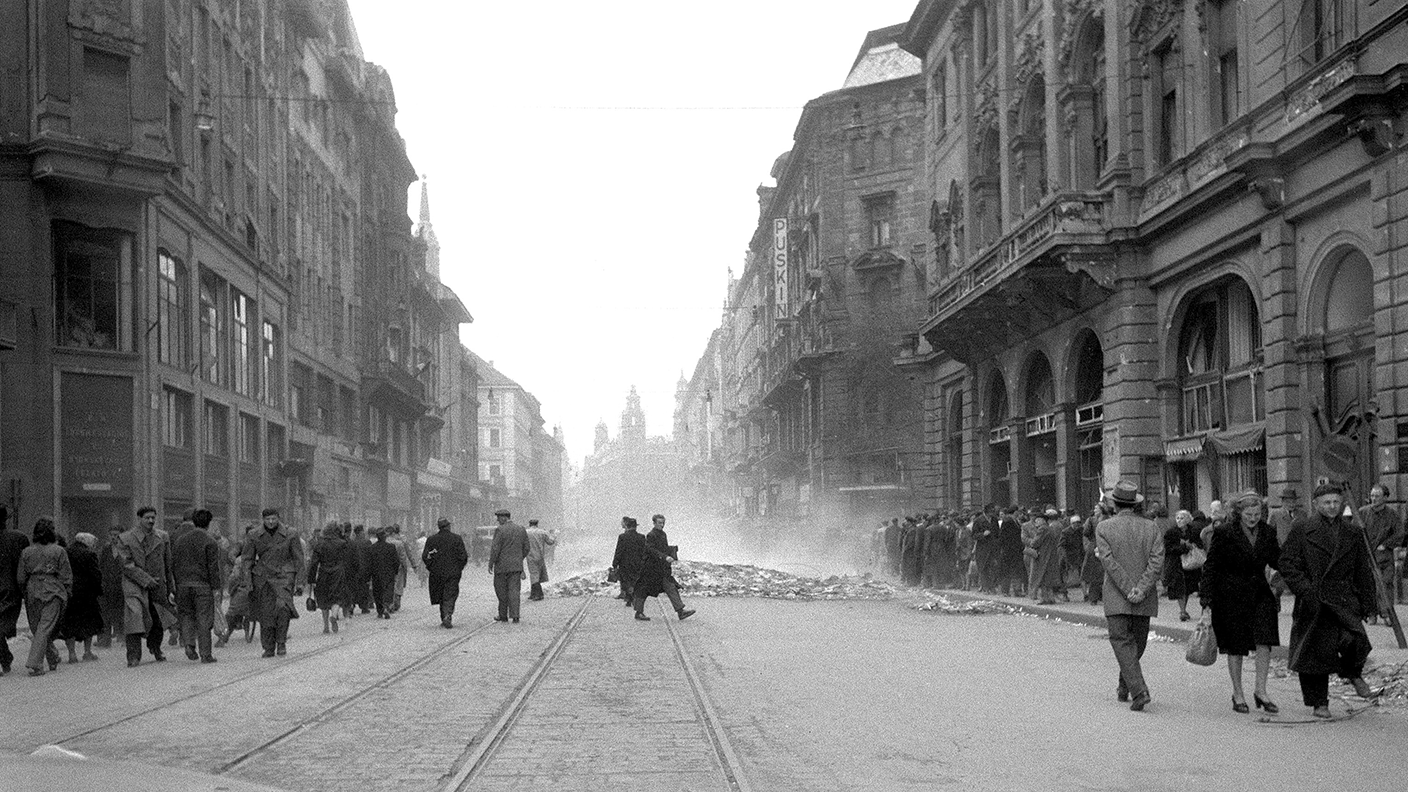23 October 1956: Hungarian Revolution starts
On this day in 1956, security forces in Hungary attacked protesters who were demanding reforms from the government of Matyas Rakosi.


From 1928 until his death in March 1953, Joseph Stalin ruled the Soviet Union and its satellites with ruthless brutality. When Nikita Khrushchev took over later that year, he eased up on the purges, while setting up the Warsaw Pact, binding Soviet-occupied countries in eastern and central Europe to the USSR. In February 1956, Khrushchev made a speech to top party officials criticising Stalin's methods, sparking hope of further change.
But with anti-communist feeling running high, protesters in Poland demanded the reinstatement of a less hardline leader who had previously been removed. Protests for similar reforms followed in Hungary. And on 23 October, security forces attacked protestors, killing a student. This merely inflamed the situation and the protests escalated. Many police officers switched sides.
That night Hungarian leader Matyas Rakosi requested help from Soviet troops, but was forced to resign the next day in favour of Imre Nagy. The Hungarian army united behind the protestors and Soviet troops had to withdraw from the capital. Although a communist, Nagy realised the population wanted an end to the system, so he announced that Hungary would leave the Warsaw Pact and demanded that Soviet troops withdraw from Hungary.
MoneyWeek
Subscribe to MoneyWeek today and get your first six magazine issues absolutely FREE

Sign up to Money Morning
Don't miss the latest investment and personal finances news, market analysis, plus money-saving tips with our free twice-daily newsletter
Don't miss the latest investment and personal finances news, market analysis, plus money-saving tips with our free twice-daily newsletter
The Soviet response was brutal. Tanks rolled into the country and by 11 November Hungary was back under Soviet control. At least 2,500 Hungarians were killed. Nagy was arrested and executed in June 1958, effectively ending protest in the USSR. Under communism, Hungary stagnated. By 1990, GDP per head was around 40% of the Western European average.
Get the latest financial news, insights and expert analysis from our award-winning MoneyWeek team, to help you understand what really matters when it comes to your finances.

-
 Restore: Profits in document shredding
Restore: Profits in document shreddingRestore operates in a niche, but essential market. The business has exciting potential over the coming years, says Rupert Hargreaves
-
 The war dividend: how to invest in defence stocks
The war dividend: how to invest in defence stocksWestern governments are back on a war footing. Investors should be prepared, too, says Jamie Ward
-
 31 August 1957: the Federation of Malaya declares independence from the UK
31 August 1957: the Federation of Malaya declares independence from the UKFeatures On this day in 1957, after ten years of preparation, the Federation of Malaya became an independent nation.
-
 13 April 1960: the first satellite navigation system is launched
13 April 1960: the first satellite navigation system is launchedFeatures On this day in 1960, Nasa sent the Transit 1B satellite into orbit to provide positioning for the US Navy’s fleet of Polaris ballistic missile submarines.
-
 9 April 1838: National Gallery opens in Trafalgar Square
9 April 1838: National Gallery opens in Trafalgar SquareFeatures On this day in 1838, William Wilkins’ new National Gallery building in Trafalgar Square opened to the public.
-
3 March 1962: British Antarctic Territory is created
Features On this day in 1962, Britain formed the British Antarctic Territory administered from the Falkland Islands.
-
10 March 2000: the dotcom bubble peaks
Features Tech mania fanned by the dawning of the internet age inflated the dotcom bubble to maximum extent, on this day in 2000.
-
9 March 1776: Adam Smith publishes 'The Wealth of Nations'
Features On this day in 1776, Adam Smith, the “father of modern economics”, published his hugely influential book The Wealth of Nations.
-
 8 March 1817: the New York Stock Exchange is formed
8 March 1817: the New York Stock Exchange is formedFeatures On this day in 1817, a group of brokers moved out of a New York coffee house to form what would become the biggest stock exchange in the world.
-
7 March 1969: Queen Elizabeth II officially opens the Victoria Line
Features On this day in 1969, Queen Elizabeth II took only her second trip on the tube to officially open the underground’s newest line – the Victoria Line.